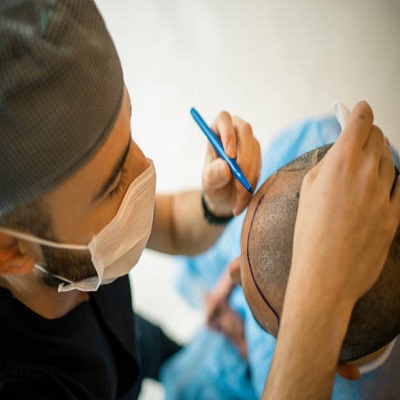One of the most common questions that people considering hair transplant surgery have is, “Will I need a second hair transplant in the future?” Hair restoration can significantly improve your appearance and self-confidence, but it’s essential to understand how the procedure works, how hair loss progresses, and whether a follow-up transplant might be necessary. If you’re considering a Hair Transplant in Islamabad, this guide will walk you through the factors that determine whether a second procedure may be required.
Understanding How Hair Transplants Work
A hair transplant involves the relocation of hair follicles from a donor site (usually the back or sides of the scalp) to areas affected by thinning or baldness. The procedure is usually performed using one of two techniques:
-
Follicular Unit Extraction (FUE): This method involves extracting individual hair follicles from the donor area and transplanting them into the thinning areas. FUE is minimally invasive and offers natural-looking results without leaving noticeable scars.
-
Follicular Unit Transplantation (FUT): In this method, a strip of skin with hair follicles is removed from the donor area, and the follicles are transplanted to the recipient site. FUT generally leaves a linear scar, but it’s often preferred when a larger number of grafts are needed.
Both techniques provide long-lasting results, but the natural aging process and ongoing hair loss can still affect the long-term outcome. So, will you need another transplant in the future?
Factors Influencing the Need for a Second Hair Transplant
Several factors can influence whether a second hair transplant will be needed after the first one:
1. The Progression of Hair Loss
Hair loss is typically a progressive condition, particularly in cases of male pattern baldness or female pattern hair loss. Even after a successful transplant, the rest of your natural hair may continue to thin or fall out over time. If this happens, you may need a second transplant to address new areas of thinning or to maintain a full, natural look.
It’s essential to understand that hair transplants do not prevent hair loss—they only address the areas that have already experienced thinning or baldness. As you age, other parts of your scalp may lose hair, making it necessary for additional procedures to maintain a balanced appearance.
2. The Stability of Your Hair Loss
The best candidates for hair transplants are those whose hair loss has stabilized. For instance, most surgeons recommend waiting until your hair loss pattern has stabilized before undergoing surgery. If you have active hair loss in the years following your transplant, additional grafts may be required in the future.
On the other hand, if you undergo the transplant when your hair loss has plateaued, the procedure will provide lasting results, with minimal need for further transplants. This is why it’s essential to wait until you have reached a more stable stage of hair loss before opting for a transplant.
3. The Quality of the Donor Hair
The success of a hair transplant largely depends on the quality of the donor hair. In some cases, individuals may not have enough healthy donor hair to cover the areas of thinning. If the donor area is insufficient, the surgeon may not be able to achieve the desired density, which could result in the need for additional transplants later on.
Surgeons also consider the characteristics of the donor hair, such as its thickness and density, to ensure that it blends well with the surrounding natural hair. If the donor hair does not match well with the recipient site, it may lead to unnatural-looking results that could require a second transplant to correct.
4. The Skill of the Surgeon
The skill of the surgeon plays a significant role in the success and longevity of a hair transplant. A highly experienced surgeon can achieve excellent results in one session, minimizing the need for a second transplant. Conversely, a poorly performed transplant may result in uneven hair growth or poor graft survival, requiring additional procedures to fix these issues.
It’s important to choose a clinic with a reputable surgeon who has experience performing hair transplants. In SKN Cosmetics clinic, you will find skilled professionals who use the latest techniques to ensure high-quality results.
Preventing the Need for a Second Transplant
While some degree of hair loss may be inevitable, there are steps you can take to minimize the likelihood of needing a second hair transplant:
1. Proper Aftercare
Following the hair transplant, it’s crucial to follow your surgeon’s aftercare instructions to promote healing and the successful growth of the transplanted follicles. This includes avoiding vigorous physical activity, protecting your scalp from the sun, and using gentle hair care products. Proper aftercare ensures the longevity of the transplanted hair and may reduce the need for further procedures.
2. Medication
In some cases, doctors may prescribe medications such as finasteride (Propecia) or minoxidil (Rogaine) after a hair transplant. These medications can help slow down the process of hair loss and improve the growth of both natural and transplanted hair, reducing the need for future transplants.
3. Hair Maintenance
Taking care of your hair and scalp can also help prevent additional hair loss. This includes regular scalp massages to increase blood flow, using hair care products that support hair health, and avoiding harsh treatments that may damage your natural hair.
When Should You Consider a Second Hair Transplant?
If you experience continued hair loss in areas not addressed by the initial transplant, or if your donor hair has thinned over time, a second hair transplant may be necessary. Your surgeon will be able to evaluate your current hair loss pattern and recommend the best course of action.
In some cases, a second transplant may not be required for many years, but this varies depending on individual factors like the rate of hair loss and the success of the initial procedure.
Conclusion
While hair transplants offer a long-lasting solution for hair loss, the natural progression of aging and continued hair thinning can lead to the need for a second procedure in the future. By understanding the factors that influence the success of a hair transplant and working with an experienced surgeon, you can maximize the results of your initial procedure and delay the need for additional treatments.
If you’re considering a Hair Transplant in Islamabad, SKN Cosmetics clinic offers the latest techniques and experienced surgeons to ensure optimal results. Contact us today to schedule your consultation and learn more about how we can help you achieve a full, natural-looking hairline that lasts.




